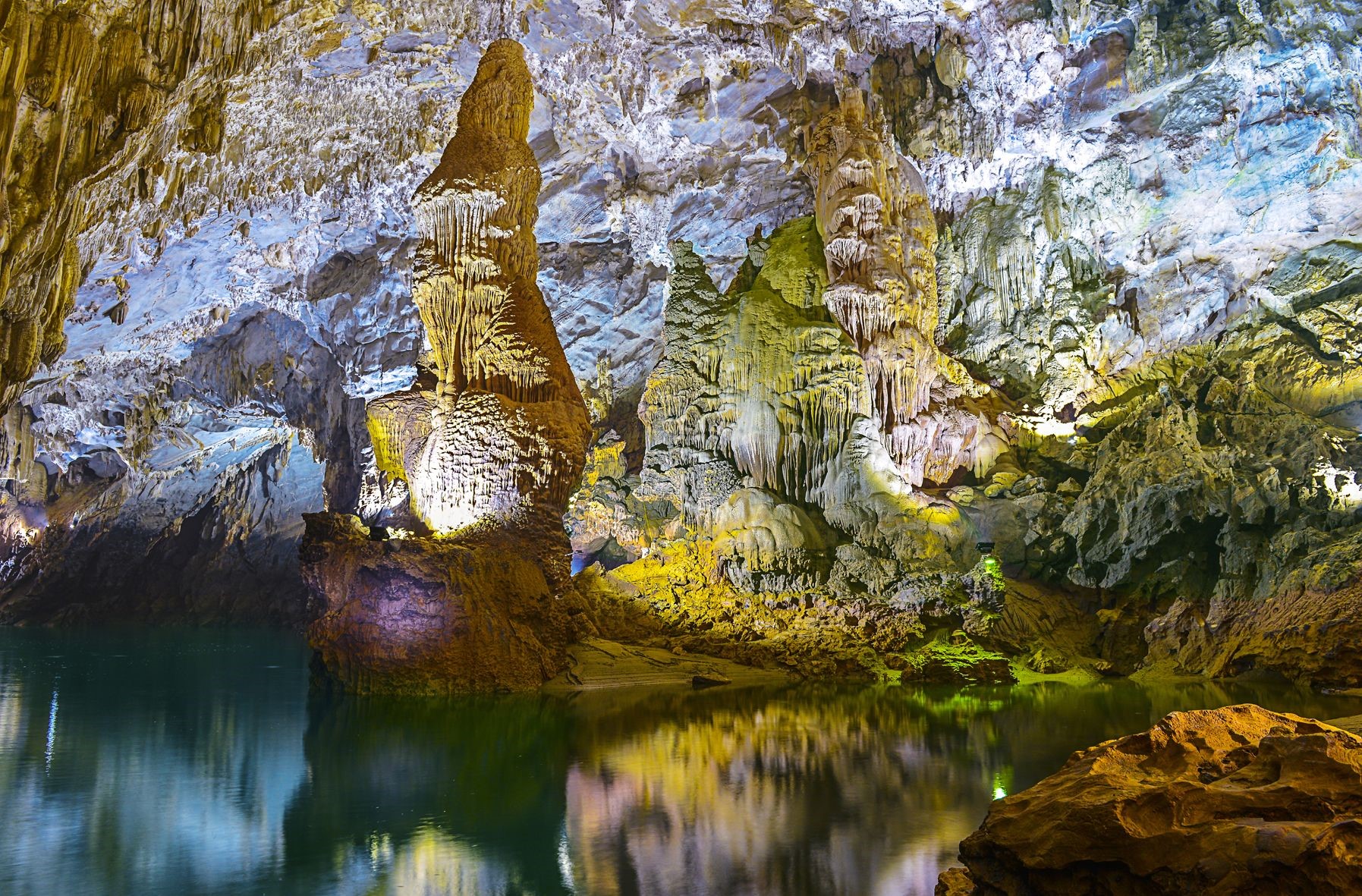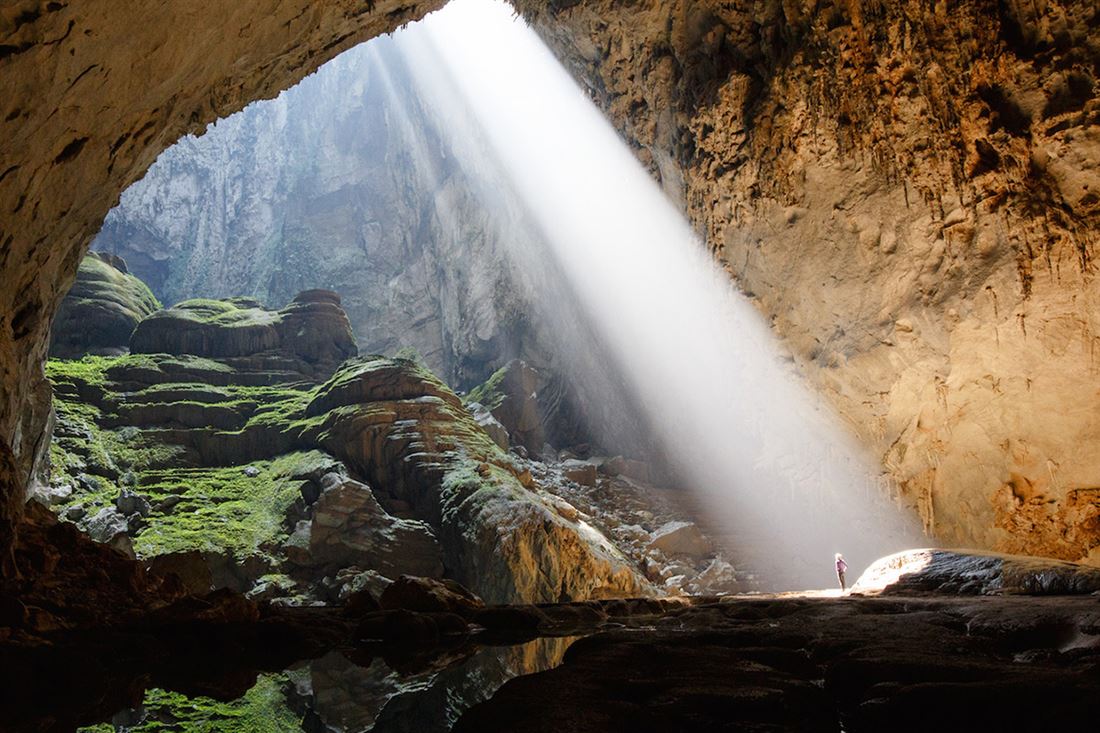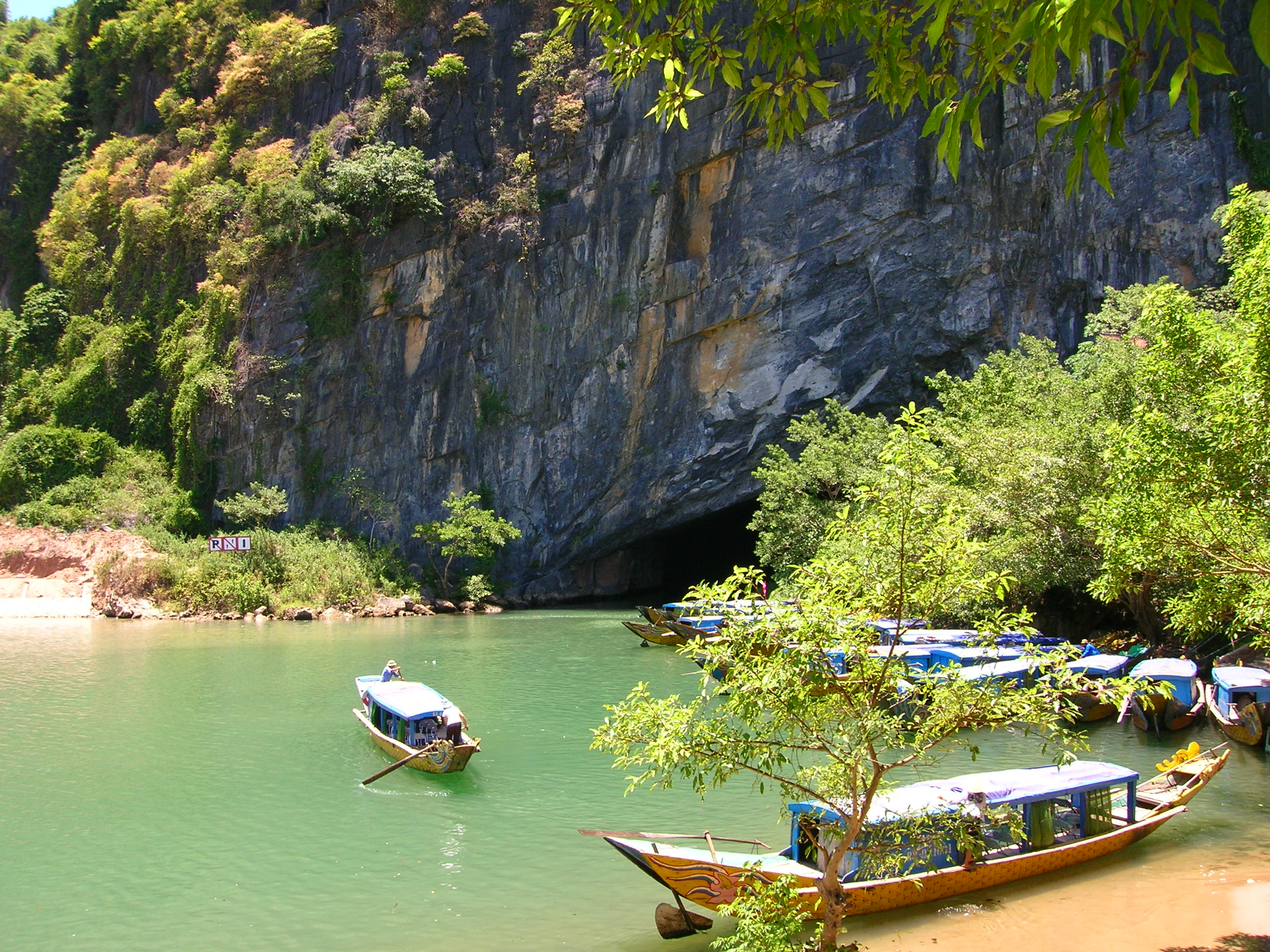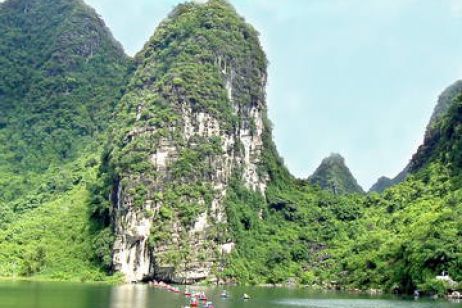Phong Nha-Ke Bang National Park
Phong Nha-Ke Bang National Park
The Phong Nha-Ke Bang National Park, inscribed on the World Heritage List in 2003, covered 85,754 hectares. With this extension, the site covers a total surface area of 126,236 hectares (a 46 % increase) and shares a boundary with the Hin Namno Nature Reserve in the Peoples Democratic Republic of Laos. The Park’s landscape is formed by limestone plateaux and tropical forests. It features great geological diversity and offers spectacular phenomena, including a large number of caves and underground rivers. The site harbours a high level of biodiversity and many endemic species. The extension ensures a more coherent ecosystem while providing additional protection to the catchment areas that are of vital importance for the integrity of limestone landscapes.

Outstanding Universal Value
Brief synthesis
Phong Nha-Ke Bang National Park is located in the middle of the Annamite Mountain Range in Quang Binh province, Viet Nam, and shares its boundary with the Hin Namno Nature Reserve in the Lao PDR to the west. The property comprises an area of 123,326 ha and contains terrestrial and aquatic habitats, primary and secondary forest, sites of natural regeneration, tropical dense forests and savanna and is rich in large, often spectacular and scientifically significant caves.
The property contains and protects over 104 km of caves and underground rivers making it one of the most outstanding limestone karst ecosystems in the world. The karst formation has evolved since the Palaeozoic period (some 400 million years ago) and as such is the oldest major karst area in Asia. Subject to massive tectonic changes, the karst landscape is extremely complex, comprising a series of rock types that are interbedded in complex ways and with many geomorphic features. The karst landscape is not only complex but also ancient, with high geodiversity and geomorphic features of considerable significance.
The karst formation process has led to the creation of not only underground rivers but also a variety of cave types including: dry caves, terraced caves, suspended caves, dendritic caves and intersecting caves. With a length of over 44.5 km the Phong Nha cave is the most famous of the system with tour boats able to penetrate inside to a distance of 1,500 m. The Son Doong Cave, first explored in 2009, is believed to contain the world’s largest cave passage in terms of diameter and continuity.
A large number of faunal and floral species occur within the property with over 800 vertebrate species recorded comprising 154 mammals, 117 reptiles, 58 amphibians, 314 birds and 170 fish. The property clearly has impressive levels of biodiversity within its intact forest cover, notwithstanding some gaps in knowledge of the population status of some species. .

Criterion (viii): Phong Nha-Ke Bang National Park is part of a larger dissected plateau, which encompasses the Phong Nha, Ke Bang and Hin Namno karsts. The limestone is not continuous and demonstrates complex interbedding with shales and sandstones. This has led to a particularly distinctive topography. The caves demonstrate a discrete sequence of events, leaving behind different levels of ancient abandoned passages; evidence of major changes in the routes of underground rivers; changes in the solutional regime; deposition and later re-solution of giant speleothems and unusual features such as sub-aerial stromatolites. On the surface, there is a striking series of natural landscapes, ranging from deeply dissected ranges and plateaux to an immense polje. There is evidence of at least one period of hydrothermal activity in the evolution of this ancient mature karst system. The Son Doong Cave, first explored in 2009, could contain the world’s largest cave passage in terms of diameter and continuity. The plateau is one of the finest and most distinctive examples of a complex karst landform in Southeast Asia and the property is of great importance for enhancing our understanding of the geologic, geomorphic and geo-chronological history of the region.
Criterion (ix): Phong Nha-Ke Bang National Park consists of a complex limestone landscape, which includes very large caves and underground rivers. The property includes karst formations which are some of the oldest and largest in Asia, and it has geological, climatic, hydrographic and ecological conditions which are distinct from other limestone karst landscapes. Its cave ecosystems and habitats are unique with high levels of endemism and adaptations displayed by cave-dependent species. The property constitutes one of the largest remaining areas of relatively intact moist forest on karst in Indochina, with a forest cover estimated to reach 94%, of which 84% is thought to be primary forest. Furthermore, the property protects globally significant ecosystems within the Northern Annamites Rainforests and Annamite Range Moist Forests priority ecoregions.

Criterion (x): A high level of biodiversity is found within the property, with over 2,700 species of vascular plants and over 800 vertebrate species. Several globally threatened species are also present: 133 plant species and 104 vertebrate species have been reported, including several large mammals such as the endangered Large-antlered Muntjac, Clouded Leopard, and the critically endangered Saola. The level of endemism is high, especially in the cave systems. Furthermore, it is estimated that over 400 plant species endemic to Viet Nam are found within the property, as well as 38 animal species endemic to the Annamite range. Several new species to science have recently been found, including cave scorpions, fish, lizards, snakes and turtles, and more species are likely to be discovered. Importantly, four threatened primate taxa endemic to the Annamites are found within the property: the Hatinh Langur (specialised in karst forest and endemic to Viet Nam and the People’s Democratic Republic of Lao), the black form of the Hatinh Langur, sometimes considered as a separate species, the Red-shanked Douc Langur, and the largest remaining population of White-cheeked Gibbon.
Date of Inscription: 2003
Extension: 2015
Property : 123,326 ha
Buffer zone: 220,055 ha


